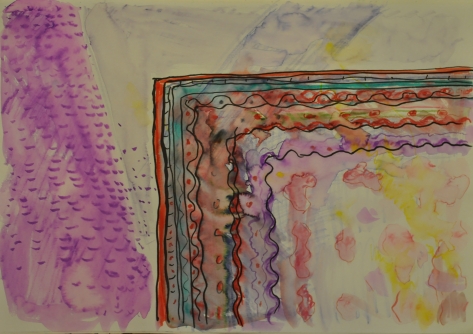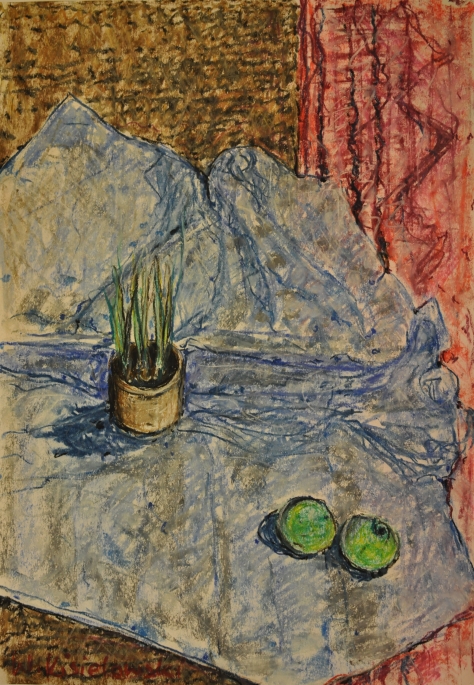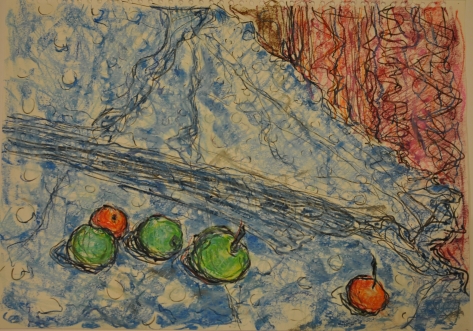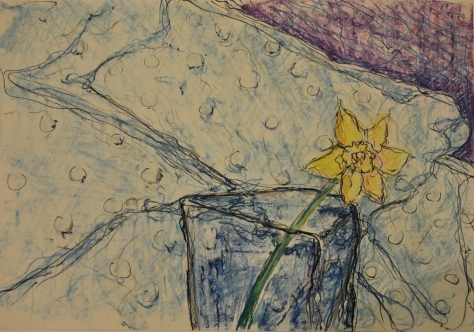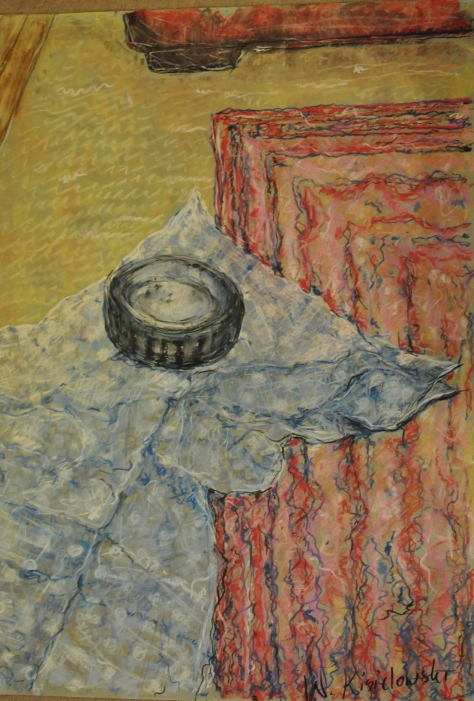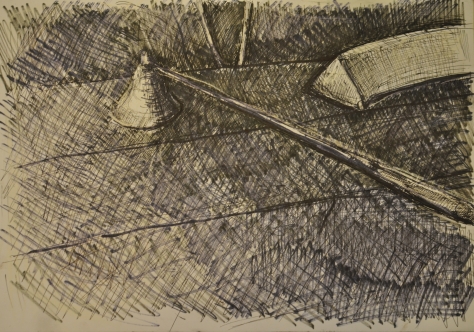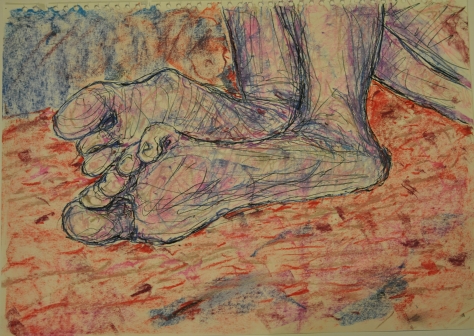Contextual focus point: Prunella Clough “Wire Tangle”
I got acquainted with the image of “Wire Tangle”. This picture was painted with oil on canvas.Is a very typical picture of this artist, a picture where the background is presented in a neutral color.One could conclude that the color palette is taken straight from the facade of an old building of rock or concrete.However, it is not flat, banal has its structure and soil.
Unfortunately, I cannot see this image live, so I cannot say anything about its structure, how it was created. I only see one-dimensional reproductions on paper.
I know that Prunnella used a thick impasto, she daubed, scraped and scratched her paintings, and she used textured material like a sand, wire wool or wire mesh in her paint.
Wire Tangle for me is a picture with a perfectly painted background imitating marble, which even without the foreground element is painted with extraordinary care, there is a bit of energy and life by adding and lighting it with a bit of a yellow color. The palette of this color clearly shows it in a strengthened form, in the form of several of the graphic elements.In my opinion this element is such a metaphorical sun that draws children in the upper corner of the picture and then illuminate it with its rays from that point.
It is obviously a metaphor and the picture is not primitivistic but more industrial, it shows us the foreground object, which was added, painted or drawn in the final stage of image creation, I mean wire of course. We know from what the foreground object is from the title, but it is definitely a wire? For me it could be an unwanted drawing made by a child on the wall, or any random graffiti, but let’s pay attention to the compositions, it’s not accidental, it’s not central as it usually is, it would be too banal. The center of the line and its constraint is on one part of the image, only a few lines stretch into the rest of the image, the whole composition is balanced, so that the image does not lean in on one side, the image is balanced because the wire does not really move in relation to the background, there is no contrast between them, the color is perfectly combined and we have the impression of being there in this stone slab from the very beginning. I think that the whole composition is based on the exchange of how the first and second plan interact with each other, they must or are forced to coexist. It makes this picture and the whole composition unique.
I also saw many elements in common with Elizabeth’s Blackadder creativity in studying her paintings and the way of composition, the same way of presenting space, placing or adding flat elements in the image structure. In Prunnella we can see more industrial elements, while in Elizabeth we can find trivial items found in every home for me it is a very original and quite a new form of creating compositions. New to me because I just discovered it. Prunella in her paintings is more linear and we have the impression of not only paintings on canvas but also works created with the use of other drawing tools. Her works are perfectly balanced, although they often show very aggressive sharp forms, or very geometrical forms, but in a sense, we read them very softly, you can see in it a clear relationship where each element is integrated into the background in a very unique way. Even a person who does not like this kind of art, should get acquainted with its creativity, because you can extract a lot from it.
Prunella Clough “Wire Tangle”
https://www.artuk.org/discover/artworks/wire-tangle-ii-207091









